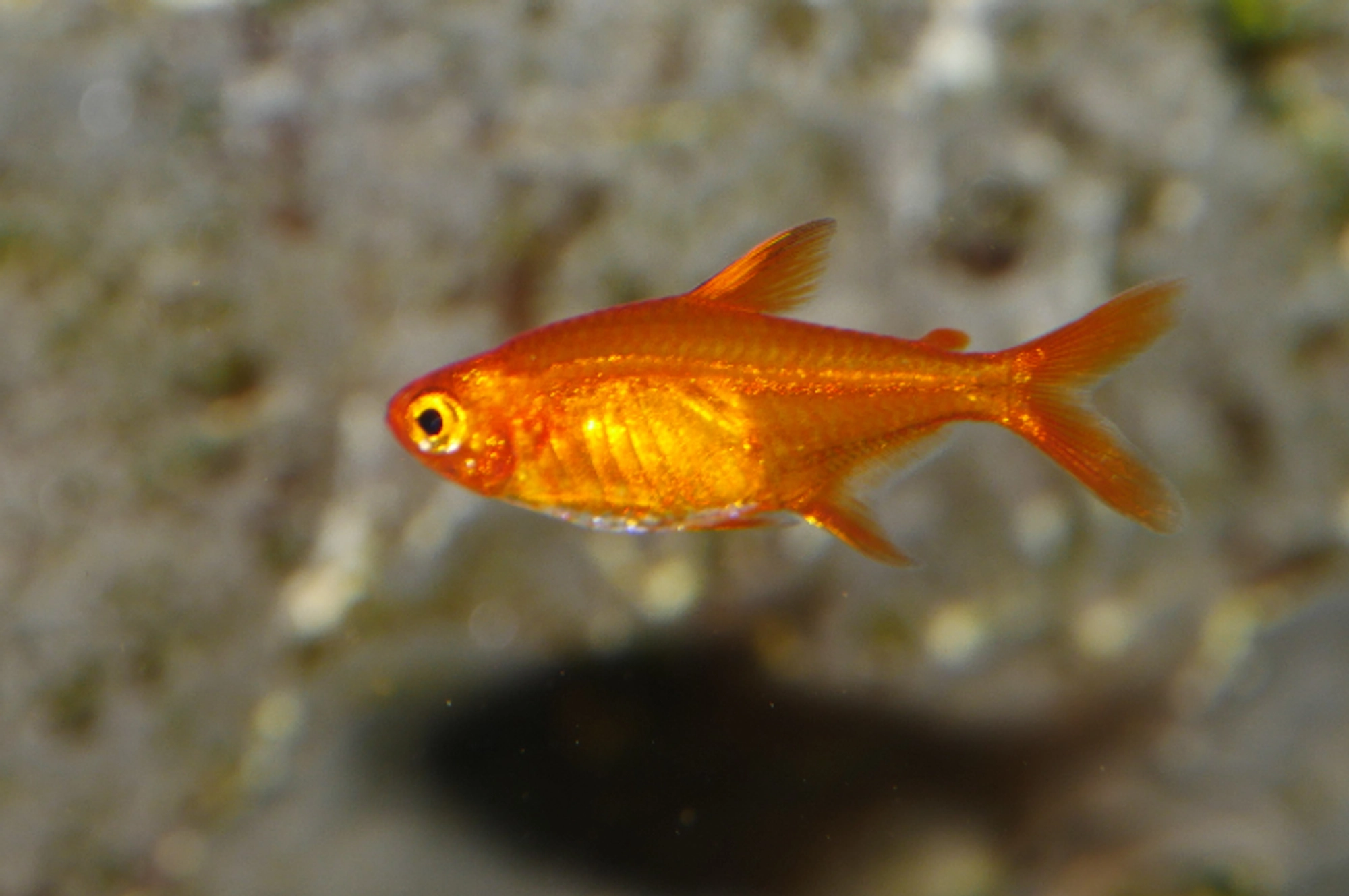

Product Details

Size
1cm - 1.5cm

Temperament
Peaceful
"Add vibrant Ember Tetras to your aquarium! These small, fiery fish bring a splash of color and lively behavior, perfect for community tanks and aquascapes."
Overview: The Ember Tetra (Hyphessobrycon amandae) is a stunning freshwater fish known for its vibrant orange-red coloration and small size. Native to the slow-moving rivers and tributaries of Brazil, Ember Tetras are popular among aquarists for their lively behavior and ease of care. These peaceful fish make a great addition to community tanks and are particularly well-suited for nano aquariums and planted tanks.
Appearance:
- Coloration: Ember Tetras are renowned for their bright, fiery orange to red hues, which can vary slightly depending on diet and lighting conditions.
- Body Shape: They have a typical tetra body shape—slender and streamlined with a slightly rounded caudal fin.
- Size: These tetras are small, growing to about 0.8 inches (2 cm) in length.
Water Conditions: To ensure the health and vibrancy of Ember Tetras, maintain the following water conditions:
- Temperature: 72-82°F (22-28°C).
- pH Range: 5.5-7.0.
- Water Hardness: 5-15 dGH.
- Tank Size: A minimum of 10 gallons is recommended for a small school. Larger tanks are preferable for better water stability and to accommodate a larger group.
Tank Setup: Creating an ideal habitat for your Ember Tetras involves several considerations:
- Substrate: Use fine gravel or sand to mimic their natural riverbed environment.
- Decor: Include plenty of live plants such as Java moss, Anubias, and Amazon swords to provide hiding spots and create a naturalistic setting. Driftwood and rocks can also be added for additional structure.
- Filtration: Use a gentle filter, as strong currents can stress these small fish. Sponge filters or hang-on-back filters with adjustable flow are ideal for maintaining water quality without creating excessive water movement.
- Lighting: Moderate lighting is sufficient to highlight the vibrant colors of the fish and support plant growth.
Tank Mates: Ember Tetras are peaceful and can coexist with other similarly peaceful fish. Choose tank mates carefully:
- Compatible Species: Other small, peaceful fish such as small tetras, rasboras, dwarf corydoras, and small livebearers. Shrimp and snails are also suitable tank mates.
- Incompatible Species: Avoid larger, aggressive fish or fin-nippers like barbs and cichlids that can harass or harm Ember Tetras.
Feeding Habit: Ember Tetras are omnivores with a preference for a varied diet. Providing a balanced diet is crucial to keep them healthy and vibrant:
- Staple Diet: High-quality flake food or micro pellets designed for small fish.
- Supplements: Offer live or frozen foods such as brine shrimp, daphnia, and bloodworms to enhance their coloration and health.
- Vegetables: Occasionally provide blanched vegetables like spinach or zucchini.
- Feeding Frequency: Feed them 1-2 times a day in small portions to prevent overfeeding and maintain water quality.
Care and Maintenance: Regular care and maintenance are crucial for the well-being of your Ember Tetras:
- Water Changes: Perform weekly water changes of 20-30% to keep water parameters stable and reduce waste buildup.
- Health Monitoring: Watch for signs of common fish diseases such as fin rot, ich, and parasitic infections. Early detection and treatment are vital.
- Behavioral Observation: Observe their behavior regularly. Healthy Ember Tetras are active, schooling together, and displaying vibrant coloration.
Breeding: Breeding Ember Tetras can be a rewarding experience:
- Pair Selection: Choose healthy and vibrant individuals to enhance breeding success. Males are typically more colorful and slender compared to the rounder females.
- Spawning Environment: Set up a separate breeding tank with soft, acidic water (pH around 6.0) and a temperature of 78-80°F (25-27°C). Include fine-leaved plants or spawning mops for egg-laying.
- Spawning Process: Condition the breeding pair with high-quality live or frozen foods. Once eggs are laid, remove the adults to prevent them from eating the eggs.
- Fry Care: The eggs will hatch in about 24-36 hours. Feed the fry infusoria or commercially available liquid fry food until they are large enough to eat micro worms or finely crushed flake food.
Ember Tetra
Product Options
10 pieces
20 pieces
Delivery
 FishyHub Livestock SG
FishyHub Livestock SG Aquarium Fishes, Tanks & Supplies From FishyHub Livestock SG


 SG
SG



